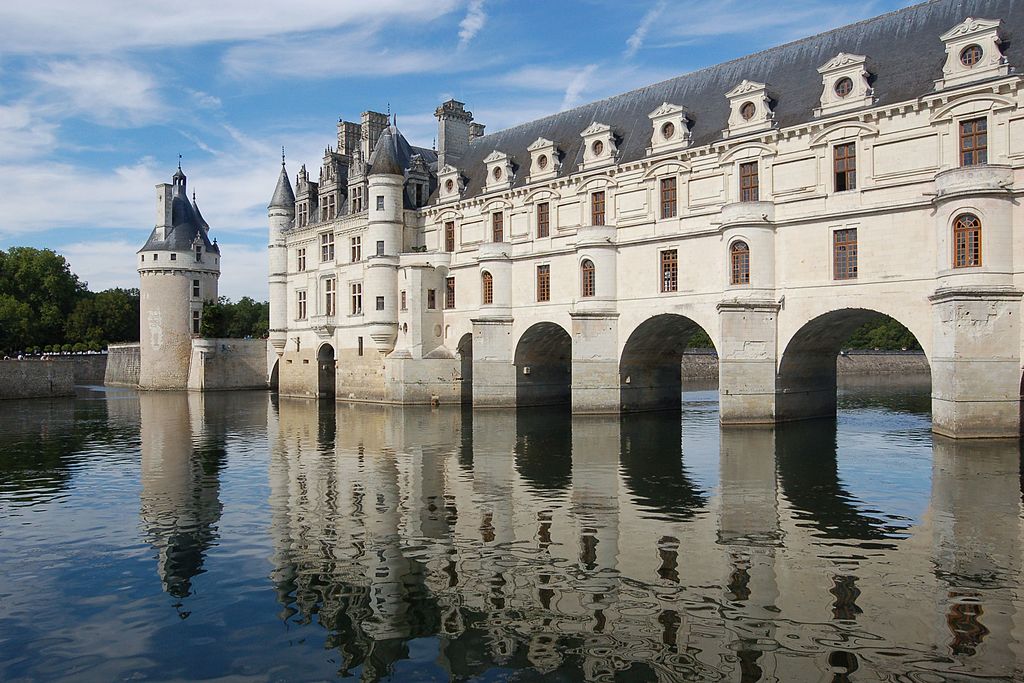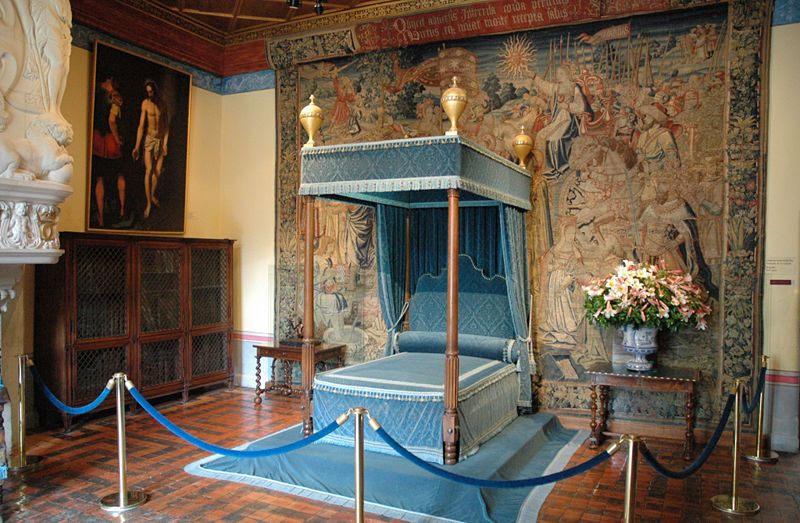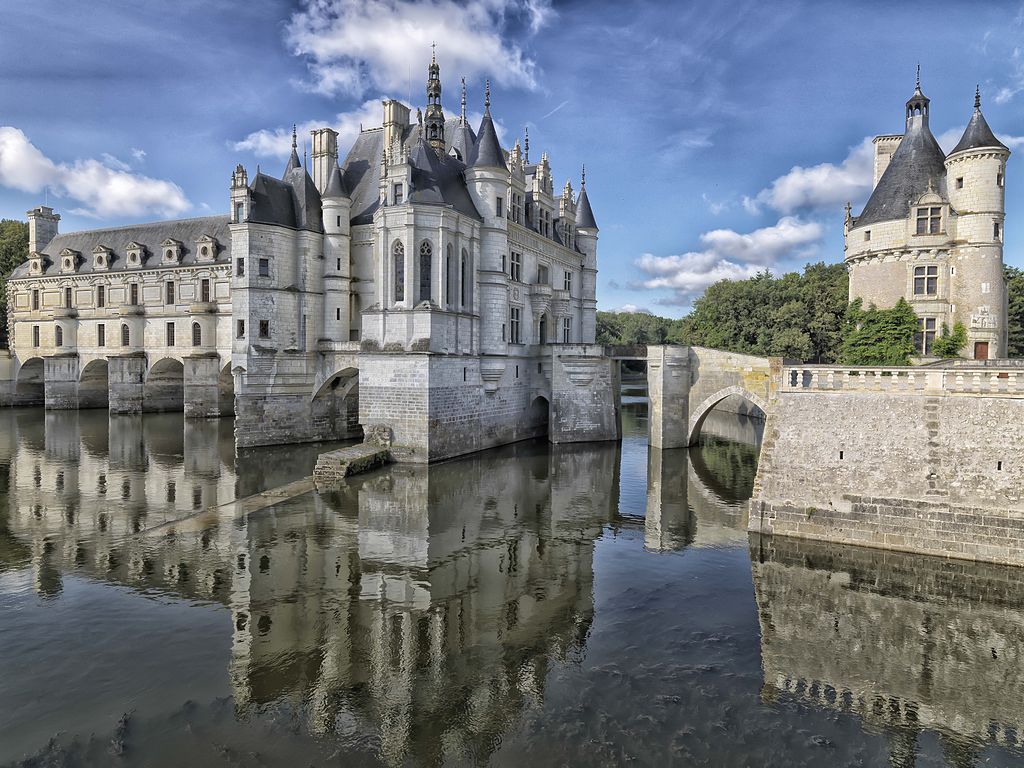The Château de Chenonceau is a magnificent castle spanning the River Cher. It is located close to the village of Chenonceaux in the Indre-et-Loire département of the Loire Valley in France. One of the most famous châteaux of the Loire valley, it is a unique Renaissance castle, a fairytale and stunning one, partly because it was built over the Loire river bed.

This castle was first mentioned in the 11th century. In 1512, Thomas Bohier, chamberlain for King Charles VIII of France, purchased the fortress and replaced it with a new castle rebuilt in Renaissance style, leaving only the old keep from the original building and extending it along the river. His spouse, Katherine Briconnet, oversaw the construction works, and the family hosted high-ranked French nobility, including King François I of France twice. Unfortunately, for the family, the château was later confiscated by the French Crown to pay-off their debts.

Enamored of his favorite long-term mistress Diane de Poitiers, King Henri II of France gifted her this castle in 1547 after the death of his father, François I of France. Charmed by the castle and its surroundings, Diane hired Philibert de l’Orme (a famed architect of the French Renaissance era and a writer as well) to construct the impressive arched bridge joining the château to its opposite bank, as well as gardens laid out in Italianate style. The gorgeous five-arch bridge mirroring its own reflection across the River Cher makes this château eminently majestic. Here and there, the interior was decorated with numerus symbols “HDC” in the castle’s adornments and masonry, and somewhere the markings were carved with “H” and “D”, all of them referring to the love story of Henri and Diane. Thus, Diane was the second women who influenced the castle’s design.
After Henri’s tragic demise in 1559, his neglected queen, Catherine de’ Medici, compelled Diane to relocate to Château de Chaumont, even though by then she was its legitimate owner. Catherine launched her own architectural project: she proceeded to build the gallery and grand ballroom on Diane’s bridge, which at last gave Chenonceau its now iconic look. Catherine spent a lot of money on the château and celebrations there. In 1560, the opulent festivities were given at Chenonceau to celebrate the ascension to the throne of Catherine’s eldest son – the sickly King François II. More chambers were added between the chapel and the library on the east side of the corps de logis, as well as a service wing on the west side of the entry courtyard.

After Catherine had breathed her last in 1589, the château was inherited by her daughter-in-law – Queen Louise, consort to Catherine’s son, King Henry III. It was in Chenonceau when Louise learned about her husband’s assassination by Jacques Clément, a fanatical Dominican friar. For the rest of her life, a disconsolate Louise lived there, wandering across the rich rooms in her mourning garments. The new King of France – Henri IV – obtained Chenonceau for his beloved mistress, Gabrielle d’Estrées, by paying the debts of Catherine de’ Medici and making a deal with Louise, who agreed to bequeath the château to her niece, Françoise de Lorraine. At that time, her six-year-old niece was betrothed to the slightly younger César de Bourbon, Duke de Vendôme, the natural son of Gabrielle and Henri IV. In later years, the Bourbon monarchs used the château only for hunting, and in 1650, Louis XIV was the last king to visit it.
Because several powerful French women owned this château building and rebuilding it again and again, Chenonceau was dubbed “Château des Dames”, or Ladies’ Château. The Duke of Bourbon bought this castle in 1720, but he did not need it in fact and even began selling the castle’s contents. The château was purchased from the duke by Claude Dupin (a wealthy squire).
The new owner’s wife, Louise de Fontaine Dupin, ensured the castle’s resurrection. Her literary salon at Chenonceau was so popular that many famous people of the Enlightenment visited it on a regular basis. Among them, there are the writers Voltaire, Montesquieu, and Fontenelle, the playwright Marivaux, the philosopher Condillac, and the naturalist Buffon. The philosopher Jean-Jacques Rousseau was Dupin’s secretary and tutored her son. During the First French Revolution, Louise convinced the Revolutionary authorities that the castle could not be destroyed because its bridge across the river was necessary for the development of trade and commerce.

Years later, Marguerite Pelouze, who was a rich heiress, acquired the château in 1864. On her orders, the architect Félix Roguet restored it to its previous magnificence, renewing the interior and removing some of Catherine’s additions. The figures of Hercules, Pallas, Apollo, and Cybele, which adorned the castle inside, were moved to the park. However, Marguerite squandered her money on this ambitious project and grand parties at Chenonceau. During many years, the château changed its owners: Marguerite sold it to José-Emilio Terry, a Cuban millionaire, in 1891, but in five years, Terry gave it to his relative, Francisco Terry, who again sold it in 1913 to Henri Menier, a member of the Menier family, who are French chocolate magnates.

During the Second World War, the château was bombed heavily by the Germans, and its many parts transformed in ruins. In 1951, the Meniers commissioned the architect Bernard Voisin to restore the château and the gardens to their former magnificence, which was successfully implemented. Thanks to the Menier family, now the castle is equipped with Renaissance furniture, a unique collection of the 16th and 17th century tapestries, and a huge number of art masterpieces such as paintings by Rubens, Le Tintoret, Rigaud, Le Primatice, and Nattier. The bedrooms of the ladies of the château, who had owned it at different times, are sumptuous and exquisite. Now thousands of tourists visit the castle every year, for it Château de Chenonceau is rightfully considered one of the most beautiful buildings of the Loire Valley.
All images are in the public domain.
Text © 2020 Olivia Longueville





